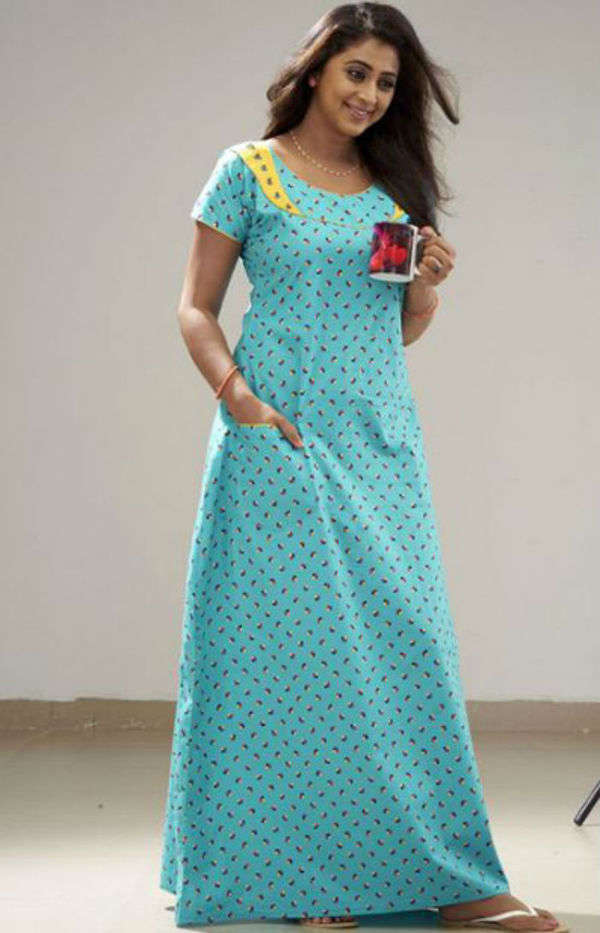- News
- Why nightie shaming needs to stop
This story is from November 25, 2018
Why nightie shaming needs to stop

From Saira Bano’s pink negligee to fashionable denim maxis, the Indian woman’s favourite all-day apparel has seen many avatars. But it’s also become the butt of jokes and bans.
Sushma Shirsat’s wholesome, middle-class, 45-year-old body has spent most of its life inside that airy cotton floral tent called the nightie. For Shirsat, who runs an autorickshaw parking lot in Thane every night, the two maroon and navy-blue nighties she calls “gowns”, at Rs 150 apiece, pretty much make up her daywear, nightwear and workwear.In the morning, they allow her to cook, clean with ease and later, camouflaged by a dupatta, they afford her modesty as she steps out for errands nearby. Then, around 7pm, when her auto-manning duty begins — a graveyard shift sometimes visited by dignified drunks and deviant stunt bikers —Shirsat dons her “professional” look, throwing on a white labcoat-like apron over her flowery maxi the way Victorian women once wore housecoats over sheer negligees to make it acceptable homewear.
They may easily be the favourite invisibility cloak of women in large parts of tropical India, but there’s also a nightie shaming brigade out there. Last week, Tokalapalli village in Andhra Pradesh made headlines for imposing a fine of Rs 2,000 on women found wearing the night dress between 7am and 7pm. The village apparently has even reserved a ‘prize’ of Rs 1,000 for those who snitched on these deviants. To many in Mumbai, this penalty was a stuffy reminder of Gothivali, the Navi Mumbai village whose sari-clad mahila mandal members had put up a notice on the village council in 2014 saying women would be fined Rs 500 for wearing the maxi in public. While the mandal reluctantly withdrew the penalty on the “indecent garment” following public outcry, instances of mild shaming persist. In Bengaluru, for instance, a school once asked mothers to stop appearing in nighties for their “safety”.

So, for all its featherweight frivolity, the Indian nightie does rustle up a weighty debate. “Wearing the nightie outside is one way in which women not only expand their public space but also inscribe themselves in it,” says filmmaker Paromita Vohra, who left to herself, would like to be in a nightie all day. “The mixing of the private and public space shows comfort which is ultimately what all movements — be it gender, sexuality, class and caste — are all about: the right to be me,” she adds. “But every time a woman takes up space or becomes comfortable, people become uncomfortable,” says Vohra, whose most enduring image of a cotton nightie in popular culture is that of a kaftan-clad Shabana Azmi in the 1982 Hindi film Arth in which the actress portrays a divorced woman on the path to finding her identity.
Until the ‘80s, it would seem, all onscreen nighties were of the satin, pastel, come-hither variety. “Honeymoon nighties were even advertised in newspapers then,” says Vohra, who vividly remembers Saira Bano demonstrating her entire night-time ritual in a Barbie-pink negligee in a song from the 1968 film Jhuk Gaya Aasman. The advent of powerlooms and mass production stripped the garment of its silky, aspirational aura as cheap cotton options hit the market. Suitably localised with elements such as a poker-faced double frill covering the breast (you even get maxis with built-in dupattas these days), the nightie soon became a cotton armour that found quick takers in hurried school-tiffin-packing mothers in the north as well as villagers in Gujarat and Maharashtra.

To know how nighties became the “national dress” in Kerala in the ‘70s, you must turn to one Mr Benny, once locally known as ‘Nighty Benny’. “Nighties gained a foothold in Kerala in the wake of the Gulf boom, when men brought home nighties for their wives,” says Benny, who invested Rs 3,000 in a nightie-manufacturing company at Piravom. It produced only 50 to 100 nighties a month then and Benny would carry these in buses to sell them to shops in nearby districts, earning the nickname ‘Nighty Benny’. Later, his wife joined the business in 2006, gave the garments a designer edge replete with zips, hooks, laces, pockets. Soon, actresses like Lakshmy Gopalaswami and Kaniha inhabited these fancy smocks, turning the enterprise into a one-lakh-nighties-a-month firm called N’Style. The no-frills product has now mutated into fancy avatars such as maternity and feeding wear. “Longer sleeves are preferred by Muslim women. Younger age group prefer A-line designs,” says Benny, adding that their dark blue denim nighties are a “sold-out” item. Also, his nickname has changed to N’Style Benny, he says.
End of Article
FOLLOW US ON SOCIAL MEDIA
